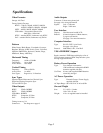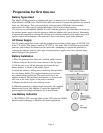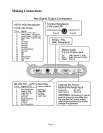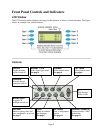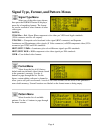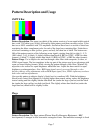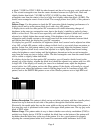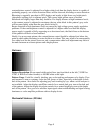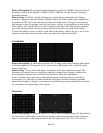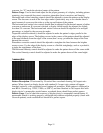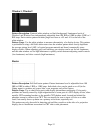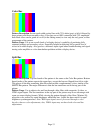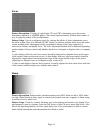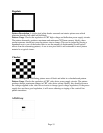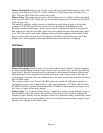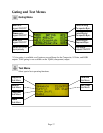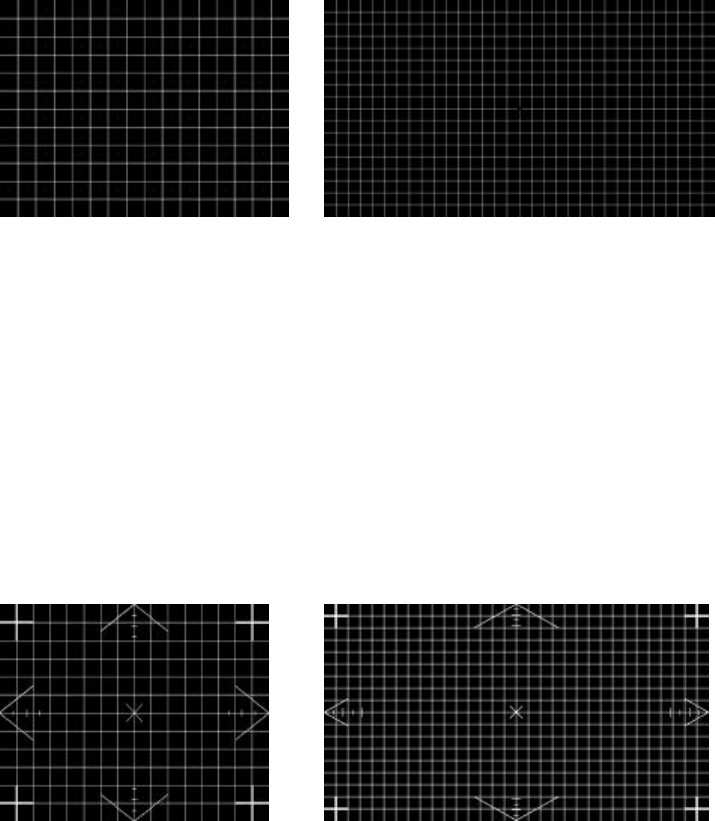
Page 10
Pattern Description: Eleven equal-width horizontal bars step from 100 IRE white at the top of
the pattern to black at the bottom (7.5 IRE for NTSC, 0 IRE for all other formats), forming a
horizontal staircase.
Pattern Usage: Useful for visually checking gray-scale tracking performance of a display,
especially a projector with red and blue overdrive at the sides of the display, due to insufficient
correction for CRT side-to-side placement (with green in the center). Poor gray-scale tracking
performance is seen as a primary color tint (red, green, or blue), at the bright top or dark bottom
of the pattern. To avoid the effects of color overdrive at the sides of the display when checking
gray-scale tracking, observe the gray scale up and down only the very center of the display.
To check the effects of color overdrive at the sides of the display, observe by eye or use a color
analyzer to check the color at the left, center, and right end of one horizontal bar
Crosshatch
Pattern Description: 16 white horizontal lines and 12 white vertical lines forming square boxes
on black background (32 horizontal by 18 vertical lines in HD modes) with a white dot in the
center of each box.
Pattern Usage: Used to check and adjust convergence of red, green and blue pictures. The
horizontal and vertical lines are usually best observed to detect color fringing resulting from
misconvergence, and the dots are usually best observed to make fine adjustments.
Even if a display device provides an internally-generated crosshatch pattern for checking
convergence, it is often best to double-check the convergence with an externally-generated
pattern. Occasionally, a display’s convergence on an internally-generated pattern doesn’t match
its convergence on external input video signals.
Overscan
Pattern Description: 16 horizontal lines by 12 vertical lines crosshatch pattern (32 horizontal by
18 vertical lines in HD modes) with chevrons pointing outward at the center of each of the four
edges. Four tic marks at the center of each of the four edges mark 2.5%, 5%, 7.5% and 10%



